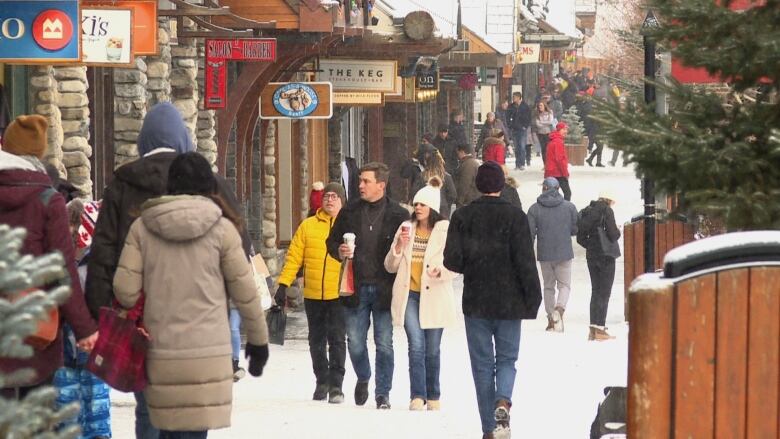Transit options help ease Banff's congestion problems, officials say
Mayor says transit options well-used, but conservationist says more solutions still need exploring

Banff is attracting an increasing number of visitors, and with 2020 projected to be its busiest year on record, traffic congestion is an ongoing concernbut Parks Canada saidtransportation alternativesare helping to lessen the problem.
Since 2016,Parks Canada statistics reflect that the number of annual visitors to Banff has hovered around 4.1 million, with an expected jump in 2017 when Canada 150 offered free admission.
But Greg Danchuk, the visitor experience manager for Parks Canada, said that visitation for2019-20 is on track to exceed even 2017 by a few percentage points.
"2017 was our peak,"Danchuksaid. "But we're above 2017 as well now."
For context, these numbers are a marked increase from 2014-15a then-record-breaking year that saw 3.6 million tourists flock to the mountain town.
Visitation exceeds threshold for congestion, mayor says

For an economysustained by tourism, the numbers reflecthealthy growthBanff residents are grateful for, Mayor Karen Sorensen said.
But for a town that's only four square kilometres, she saidthe tourismboom presents unique challenges.
"Visitation is how we survive here, and frankly, how we're allowed to have a town in a national park. So it's what we do, it's how we market ourselves," Sorensen said.
"[But] this was the first summer since we started to count our vehicles that we had over 24,000 vehicles coming and going into Banff per day."
That 24,000-vehicle figure, Sorensen explains, representsthe town's threshold for congestion and in the summer of 2019it swelled to sometimes 30,000 vehicles a day, resulting inbottlenecked roads, crowded trailsand conservation experts saya threat to the surrounding wildlife.
"We're seeing it does have an impact on where and how wildlife are moving in the park," said Katie Morrison, the conservation director for the Canadian Parks and Wilderness Society.
Those worries are readying to grow. Morrison said as the masses increase, so will the demandfor infrastructure.
"I think we could be seeing more impacts as we build more or as there's pressure to build more to accommodate [more] people," Morrison said.
Measures to reduce, manage traffic introduced
Sorensen said traffic congestionand the additional concerns it brings, prompted the introduction of measures to reduce and manage it.
"It's not the visitor experience that necessarily anybody wants when they come to Banff," Sorensen said.
In an effort to prompt tourists to take the bus instead of their own vehicles, strategies have included the expansion of public transportation services such as the Roam Public Transit system and On-It Regional Transit.
According toSorensen, the buses are seeing encouraginglyhigh usageand potentially going a long way toreducevehicles entering the park.
She said 1.2 million people used Roam in 2018, and that figure grew to 1.6 million in 2019.
A 500-stall parking lot has also been built near the train station in the hopesmore visitors will park and walk,Sorensen said.
Parks Canada manager Greg Danchuk said options like theseallowvisitors to plan their trips to Banff more thoroughly and better understand peak times.
"Transit has really helped and peoples' understanding in advance, to be able to plan in advance, to have expectations when it will be busy, where it will be busy and adjust their own visit patterns based on that information," Danchuk said.
Banff still must find 'holistic solution,' conservationist says

Forconservationist Katie Morrison, the improved public transit systems are a promising start.
But to control ongoing congestion issues and protect the park itself, additional measures might have to be taken in the future.
"Right now, we're kind of addressing it as one-off type solutions," Morrison said.
Morrison said she's looking ahead to Banff's new management plan, which Parks Canada is currently developing.
It is expected to address and work on new visitor and traffic strategies.
"I think within that management plan, we have a real opportunity to be looking at human use on the park as a whole, and making sure that we're addressing how people are using the park," Morrison said.
"We need to be looking at a more holistic solution that is not just looking at a public transit solution."
With files from Dave Gilson












_(720p).jpg)


 OFFICIAL HD MUSIC VIDEO.jpg)
.jpg)



























































































